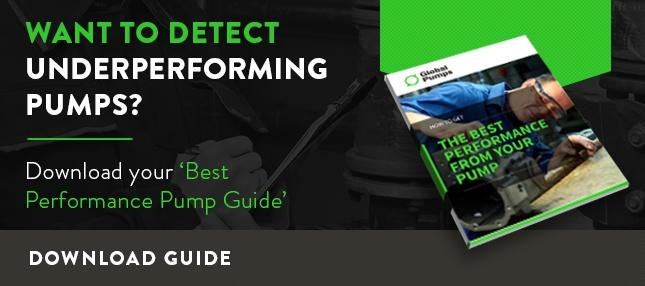![]() Solve Low Flow By Reducing Pump Friction
Solve Low Flow By Reducing Pump Friction

Low flow into the suction line or out of the discharge line can stop a pump from working effectively. In today's post, we're going to discuss one of the most common reasons for this – too much friction.
Friction and Fluids: Why Does it Happen?
Friction is often associated with solids rubbing together to create heat, which can also impede motion. But fluids cause friction as well, and while it's more apparent when it occurs with solids, fluid friction can cripple a pump system.
A dependable pump should be able to deal with the amount of friction moving fluids create, but there are other considerations which can add to this issue, making any friction worse. These include:
- Viscosity: The thicker a liquid the more friction it will create against the inside of a pump as it moves. All fluids aren't equal in this regard, and so results will vary.
- Moving Parts: Depending on the pump design, it may have more moving parts which will create more surface area within the pump. This will create more friction.
- Piping: Speaking of surface area, it goes without saying that the more piping which is used the more friction will be caused between the metal/plastic of the pipe and moving fluids. That being said, water needs space to pass, so a narrow pipe can make things worse
- Elbows: The number of elbows on either the discharge or suction side will create more friction, as will their angle. A 90 degree elbow creates more friction than a sloped one, with different elbows creating different levels of friction.
- Valves: A valve creates more friction when it is within elastomers or a sleeve. Therefore, the more valves in a system, the more friction.
- Blockages: If materials build up within the system this can impede flow. This includes mineral deposits and other unwanted materials which can cause the inside of a pipe to become rough.
- Unused Instrumentation: Any gauge or device installed in your pump system such as a flow meter or paddle switch will require fluids to pass through it. This creates added friction per instrument being used.
How to Reduce Friction
Looking at the causes of friction allows us to create effective solutions. In some situations you might think that you need to buy a more efficient or powerful pump, when in reality you simply need to apply these solutions.
Try the following:
- Flow Design: Evaluate your entire system. Where possible, reduce the length of piping required. Make the system as efficient as possible so that the fluid has less surface area to drag against.
- Elbow Replacement: Does your system really need 90 degree elbows? Try replacing these with sweeping versions which will help cut down on friction.
- Valve Placement: Are all the valves in your system necessary? If not, remove those which you don't need.
- Unused Instruments: Speaking of redundancy, if you never use some of the instruments installed on your system, then they are needlessly adding to the friction levels your pump has to deal with. Only keep the instruments you need installed.
- Regular Maintenance: Depending on what system you're dealing with, try to keep it maintained so that blockages and deposited materials don't build up over time, creating a rougher pipe interior which creates more friction.
Reduce Friction and You'll Increase Flow
By keeping friction in mind you could save yourself a lot of time, money and worry by making your existing pump system more efficient, rather than having to replace it.


